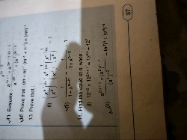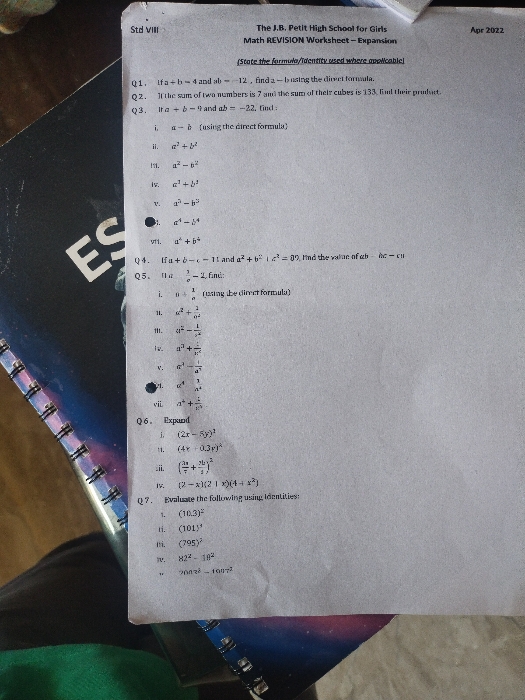ICSE Class 8 Mathematics Free Doubts and Solutions
ICSE - VIII - Maths
find the value of 4cd( c² + d²), if c + d = 11, c - d = 1
ICSE - VIII - Maths
Add the following rational number -5/12 and -7/18
ICSE - VIII - Maths
inner rectangular form house whose area is 1800 square metre four corners are called don't of each in the form of a square flower is saplings are planted in the remaining area if the side of each corner corner square is a 15 m find the area of the flower bed
ICSE - VIII - Maths - Factorisation
Factorisation : 2(p+3q)² +14(p+3q)+20
Browse free questions and answers Chapters
- 1 Probability
- 2 Playing With Numbers
- 3 Data Handling
- 4 Algebraic Expressions
- 5 Factorisation
- 6 Introduction to Graphs
- 7 Linear Inequations
- 8 Linear Equations
- 9 Circle
- 10 Rational Numbers
- 11 Sets
- 12 Squares and Square Roots
- 13 Cubes and Cube Roots
- 14 Percentage
- 15 Profit, Loss and Discount
- 16 Simple and Compound Interest
- 17 Algebraic Identities
- 18 Exponents
- 19 Construction of Special Types of Quadrilaterals
- 20 Line Symmetry and Reflection
- 21 Area of Rectilinear Figures
- 22 Surface Area and Volume of Solids
- 23 Representing 3-D in 2-D
- 24 Direct and Inverse Variations
- 25 Understanding Shapes



